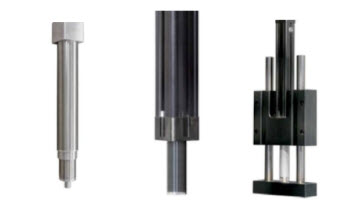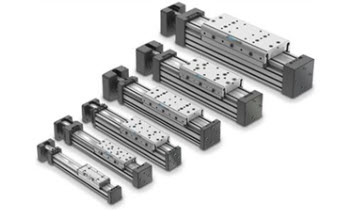Please be aware we use cookies to make your experience better. A cookie is a piece of data stored on a visitor's hard drive to help us improve your access and identify repeat visitors. Cookies can also enable us to track and target the interests of our users to enhance the experience on our site. Usage of a cookie is in no way linked to any personally identifiable non-public information. Learn more.
 | SCN5-010-050AS03-NASCN5 Series, 50 mm Stroke, 100N (22.5 lbf) Max Cont. Thrust, 400 mm/s Max Speed $364.00 As low as $341.00 | View Details |
 | SCLG5-010-050AB-NALead Screw, 10kgf force, External Amp, 50mm stroke $953.00 As low as $891.00 | View Details |
 | SCN6-020-050AB-NASCN6 Series, 50 mm Stroke, 200N (45 lbf) Max Cont. Thrust, 200 mm/s Max Speed $498.00 As low as $466.00 | View Details |
 | SCN6-020-050ABW-NASCN6 Series, 50 mm Stroke, 200N (45 lbf) Max Cont. Thrust, 200 mm/s Max Speed, Dust Proof $670.00 As low as $627.00 | View Details |
 | SCN6-040-050AB-NASCN6 Series, 50 mm Stroke, 400N (90 lbf) Max Cont. Thrust, 200 mm/s Max Speed $637.00 As low as $596.00 | View Details |
 | SCN6-040-050ABW-NASCN6 Series, 50 mm Stroke, 400N (90 lbf) Max Cont. Thrust, 200 mm/s Max Speed, Dust Proof $792.00 As low as $741.00 | View Details |
 | SCLT4-015-050AS15kgf force, Built-in Amp, 50mm stroke $1,081.00 As low as $1,011.00 | View Details |
 | SCN6-050-050AB-NASCN6 Series, 50 mm Stroke, 500N (112 lbf) Max Cont. Thrust, 100 mm/s Max Speed $535.00 As low as $500.00 | View Details |
 | SCN6-050-050ABW-NASCN6 Series, 50 mm Stroke, 500N (112 lbf) Max Cont. Thrust, 100 mm/s Max Speed, Dust Proof $691.00 As low as $646.00 | View Details |
 | SCLT4-015-050ASBR15kgf force, Built-in Amp, 50mm stroke $1,327.00 As low as $1,241.00 | View Details |
 | SCLT4-030-050AS30kgf force, Built-in Amp, 50mm stroke $1,081.00 As low as $1,011.00 | View Details |
 | SCN6-060-050ABNASCN6 Series, 50 mm Stroke, 600N (135 lbf) Max Cont. Thrust, 100 mm/s Max Speed $615.00 As low as $575.00 | View Details |
 | SCN6-060-050ABW-NASCN6 Series, 50 mm Stroke, 600N (135 lbf) Max Cont. Thrust, 100 mm/s Max Speed, Dust Proof $830.00 As low as $776.00 | View Details |
 | SCLT4-030-050ASBR15kgf force, Built-in Amp, 50mm stroke $1,327.00 As low as $1,241.00 | View Details |
 | SCLT6-025-050AB25kgf force, External Amp, 50mm stroke $1,247.00 As low as $1,166.00 | View Details |


